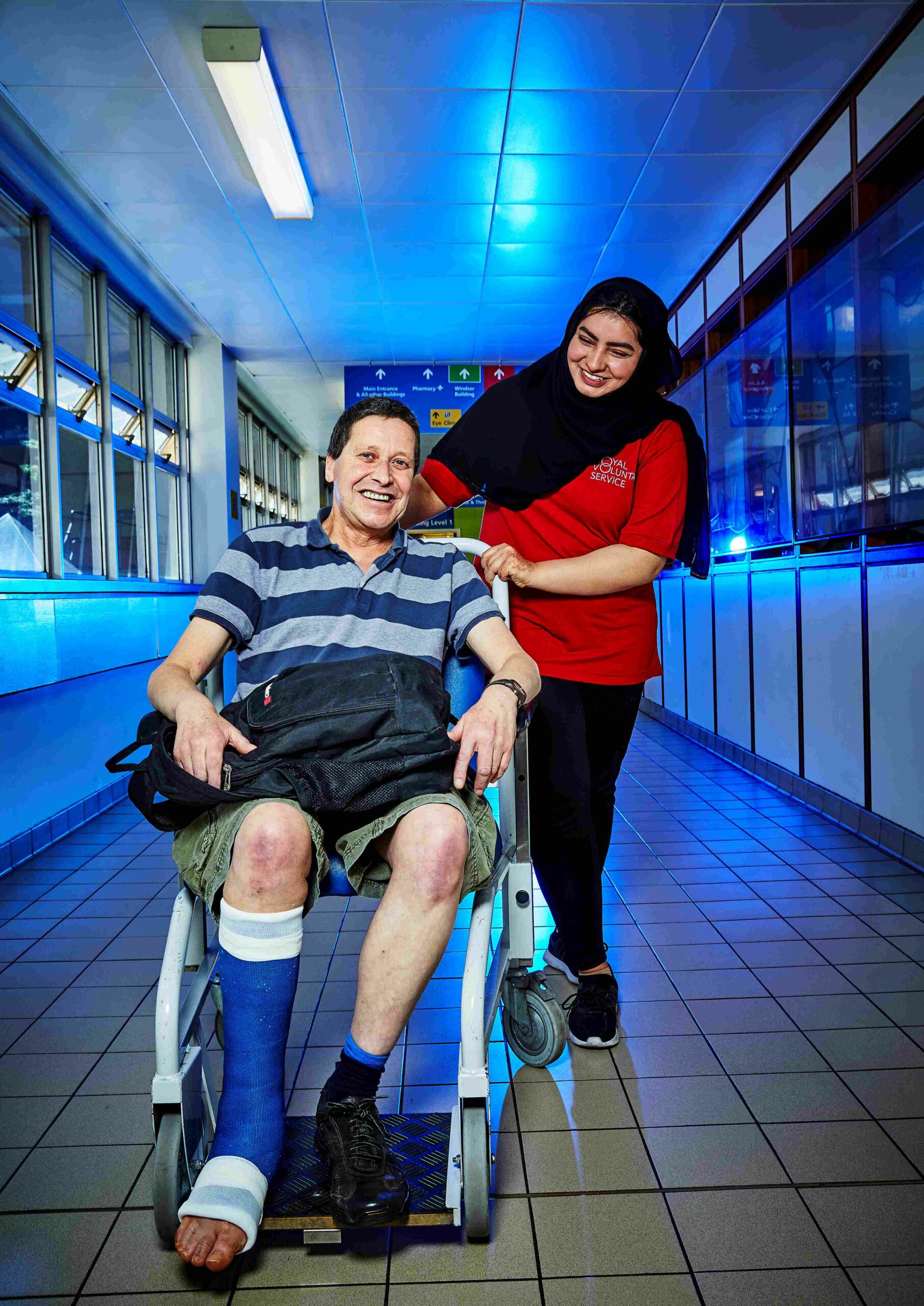People powered healthcare – delivering the NHS blueprint

Partnership working can deliver great results. In this example, a volunteer supported service with Royal Voluntary Service contributes to vastly reduced readmission rates – at two per cent compared to a national average of 15.5 per cent.
The pandemic drove us to think differently about the delivery of healthcare, and in many ways, it proved that ‘necessity is the mother of innovation’. In our article of 25th March, we discussed how the NHS and Care Volunteer Responders programme, established at the height of the pandemic in March 2020, exemplified truly integrated partnership working between NHS England, local NHS systems, a charity (RVS) with a social enterprise (GoodSam digital App), and most importantly, the public.
But this is not the only effective partnership of this type we can showcase that yields system efficiencies and improved patient outcomes.
Royal Voluntary Service works closely with the Leicestershire and Rutland ICS, a team of 86 local volunteers, and 11 RVS staff, to deliver several critical hospital discharge and admission avoidance services to more than 2,500 at-risk older adults (aged 55+) per year.
A core objective of these support services is to reduce (re)admissions associated with ambulatory care sensitive (ACS) conditions, focusing on non-clinical interventions which ultimately have clinical consequences. This includes ensuring our clients understand the importance of staying hydrated to avoid admissions associated with UTIs, encouraging clients to mobilise and reduce sedentary behaviour to improve muscle strength and mass, and provide opportunities for socialisation which stimulate both the mind and the body.
The services set out below are integrated in the discharge pathways ‘zero’ and ‘one’ at Leicester’s Glenfield Hospital and Royal Infirmary, as well as at the Leicester General Infirmary. Across the service, volunteers and staff are involved in morning discharge meetings; our staff and volunteers work alongside NHS staff to identify patients who would benefit from a portfolio of services on offer:
- Assisted Discharge (three-day day support): The client will be taken home and supported to settle in; this involves checking that the clients’ home is safe, warm, and they have food; if not, a small food shop is undertaken. The next day the client will receive a call to check on their welfare and assess any additional needs. The Trust uses this service to improve discharge (e.g. before 3 pm) and patient flow from ED. It typically runs at full capacity.
- Supporting Your Recovery (6-12 weeks): This service is offered to clients that might need a bit more support following discharge and have been identified by the Trust as at-risk, either because of previous admissions with 30 days, lack of family support, and frailty and/or wider wellbeing. Each patient will have an assessment of needs and a tailored ‘Personal Support Plan’; this will focus on social and physical rehabilitation with the aim of building confidence, reducing isolation, and ensuring they are able to manage their ‘activities of daily living’. The service assists clients to go out shopping, attend medical and social appointments, and can provide companionship, either face-to-face or over the phone. This service helps to reduce (re)admissions by improving hydration/nutrition, physical activity, and wellbeing. On average clients are supported with 6.2 visits per month, and readmission rates for these clients are around two per cent versus the national average of 15.5 per cent.
- Leicester Patient Transport (Treatment – Oncology): We also work with the Trust/ICS to ensure oncology patients attend their appointments on time and reduce DNAs to outpatients. The service is more than just transport to appointments; it provides invaluable emotional support, respite for carers, and companionship for patients who are often undergoing stressful periods of medical treatment.
The original blueprint of the NHS was rooted in the idea that healthcare provision should be a collective and collaborative responsibility between state and citizen. Our charitable mission, and the services we provide, speaks to these fundamental roots.
There now exists a growing body of medical evidence supporting the health and wellbeing gains associated with well-run, purposeful volunteering.3 In a recent survey, RVS volunteers reported higher rates of happiness (+seven per cent) and lower rates of anxiety (eight per cent) compared to a national sample of UK adults (ONS 2003). In addition, volunteers report that volunteering makes them more physically active; on average volunteers do an extra 147 minutes more of physical activity each week.
Given these health gains, RVS has increasingly reached out to those in the most deprived neighbourhoods (IMD areas 1 and 2) to get them more involved and active in their community as a tool for addressing health inequalities. Our survey suggests that 12 per cent (England), 8 per cent (Wales), and 6 per cent (Scotland) of volunteers come from the most deprived areas (IMD 1 and 2).
There are exemplars of this type of partnership working in many parts of the healthcare system; however rather than be an exemplar, this should be norm. Integration should not just include that of health and social care systems’ the public and civil society organisations both want and should have a stake in its delivery. Greater ‘people powered healthcare’ delivers both improved efficiency and population health gains.
Royal Voluntary Service will be attending the Integrated Care Delivery Forum event in Birmingham on the 9th May.